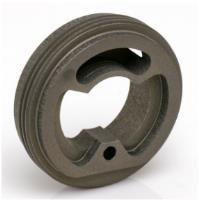 Add My Company
Add My Company
Sign In
A Guide to Hard Anodising
01-06-2017

Hard anodising is the best way to ensure a metal becomes corrosion and wear resistant. Stronger than the similar sulphuric anodising, the hard anodised finish of metal is the perfect way to ensure your machinery or equipment is as strong as possible.
What is hard anodising?
Hard anodising is the process of adding a thick oxide coating to a metal in order to increase its corrosion and wear resistance. This hard coating can range in thickness between 20 and 70 micrometres, with some hard anodised aluminium alloys achieving thicknesses of up to 100 micrometres.
Why are metals hard anodised?
Using an anodising service to achieve this hard coating is the best way to ensure the metal is durable. Whilst hard anodising is perfect for making an alloy resistant to corrosion and abrasion in tough environments, adding this hard coating on the metal also allows for increased wear resistance. This is best achieved by increasing the thickness of the hard coating.
What is the process of hard anodising?
Unlike sulphuric anodising, the process of hard anodising occurs in a chilled bath. This allows for an increased current density and voltage, which eventually makes for a thicker hard coating. This causes the increased resistance and metal toughness of a hard anodised finish.
Applications of hard anodised metals
The hard anodised finish achieved with this electroplating service is used in a range of industrial applications:
Gearbox and braking equipment for cars and other vehicles.
Components for deep sea machinery which is subject to corrosive salt water conditions.
Sections of hydraulic systems, valves and pumps.
Oil and gas industry equipment
Protection of hydraulic control systems in the aerospace industry
For more information on A Guide to Hard Anodising talk to Dorsetware Ltd
Enquire Now
List your company on FindTheNeedle.

